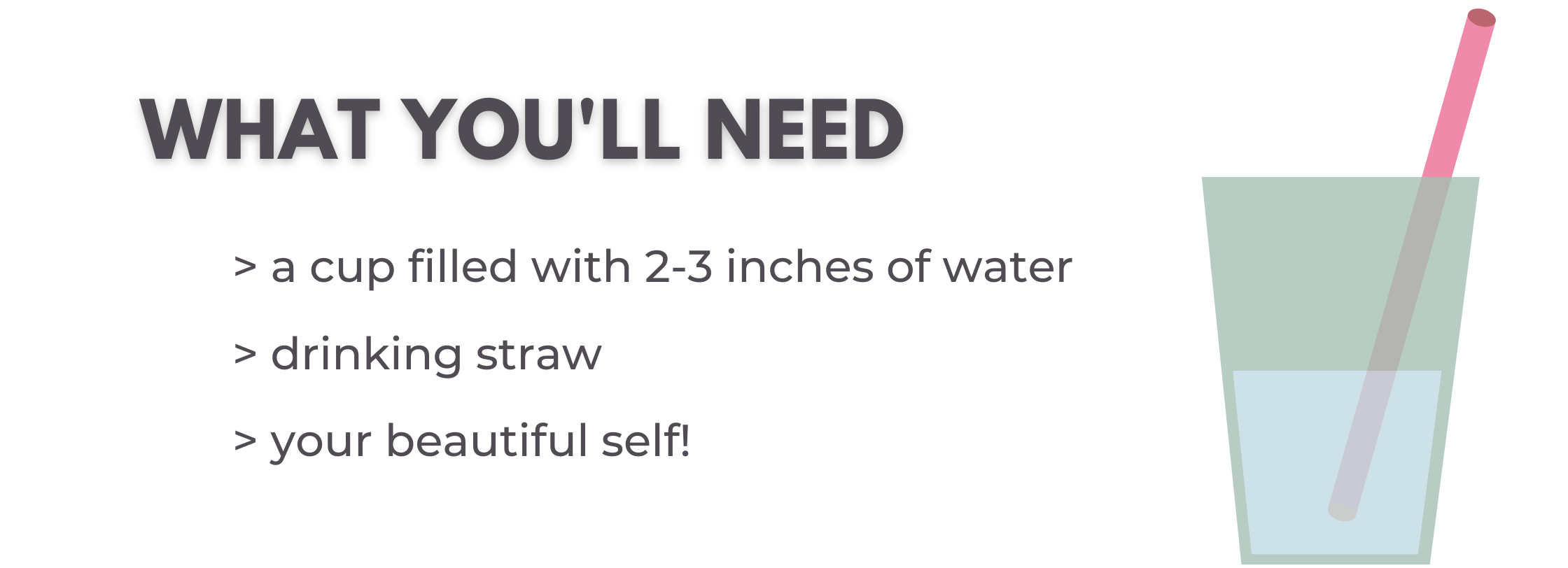5 Minute Straw in Water Vocal Warm-Up 🗣
THIS BLOG HAS BEEN UPDATED AND MOVED TO OUR NEW WEBSITE. GO READ IT HERE.
If you know me at all, you know I love vocal straw exercises inside and out (of water, that is). 😜
In this 5 minute video, I'll share with you a really simple and effective "Straw in Water" vocal exercise.
I learned this exercise several years ago from an SLP (Speech and Language Pathologist) at Cedar Sinai in Los Angeles. I still use it for myself and my students today.
When to Use the Straw in Water Exercise
The straw in water exercise is great for warming up/cooling down or soothing a tired voice.
Singing with the straw in water is also a great introduction to straw singing, if you've never tried it.
When I tried straw singing for the first time, it was without water, and I will tell you, I personally found it really awkward. I didn’t understand the “feel” I was aiming for, so I didn’t find it very effective.
After getting the hang of vocalizing with the straw in the water, I was able to then transition to using the straw without water as well. Straw singing in and out of the water are both highly beneficial.
Why sing with a straw?
There is so much science behind why straw exercises are such an effective tool in every voice user’s toolbox.
Straw singing exercises help tone and coordinate the muscles used for singing.
Using the straw trains the posturing of the vocal folds (cords) by lengthening and partially closing off the vocal tract, which is the space from your vocal folds to the tip of your lips.
A back-pressure occurs when the vocal tract is partially closed off and energy feeds back to the vocal folds. The back-pressure trains a more effective position of the vocal folds when they close, helping them to square-up better.
This benefit occurs to some degree with all semi-occluded vocal tract exercises (SOVTs), for example lip trills, tongue trills, humming, singing on a “V”, “J”, or “Z” etc.
Using the straw is basically making the vocal tract longer because the straw is extending the space where the sound is resonating. The elongation of the vocal tract allows the larynx to lower to a neutral position. When the larynx is neutral, you can't over-squeeze.
Straw Size Matters
Using the correct size of straw in length and diameter is very important when doing straw exercises.
The size matters because we want pressure equalization.
When you use the straw in water, you can increase the resistance just by how deep you put the straw into the water.
What straws to use
If you are using a regular drinking straw, try putting it into the water about 2 inches.
If you are using really small cocktail-like straws, you may need to use 3-6, so that you don’t have TOO much resistance. It shouldn’t feel like you can barely get any sound or air out.
If you use a large smoothie type straw you might need to put it deeper into the water to get the right amount of resistance. If the straw is flexible, you can also try squeezing it slightly to adjust the resistance.
It's like a mini gym workout for your voice!
Have fun and let me know how it goes in the comments.


